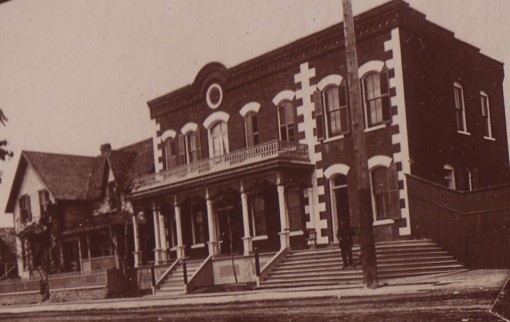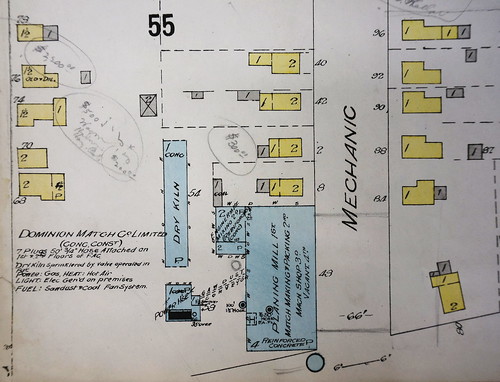The Deseronto Public Library and Deseronto Archives were delighted to welcome Frances Itani back to town to mark the culmination of the Tri-County Reads events for 2015. Tri-County Reads is a joint program of the Public Libraries of Northumberland, Hastings and Prince Edward County and this year the book chosen was Frances Itani’s Deafening, a First World War novel which is partly based in Deseronto.
The Deseronto event on October 17th began with a guided walk for around 45 people around Mill and Main Streets. The photograph shows the tour group as it passed what is now the Dockside Tavern. This building was originally the Empress Hotel, owned by William Jamieson. Jamieson’s widow sold the lot to John Freeman, Frances Itani’s great-grandfather, who ran it as the Arlington Hotel. Itani’s grandmother, Gertie Freeman, was born in the house adjoining the hotel in 1898. Gertie became deaf at 18 months and her life experiences formed the inspiration for Grania, the main character in Deafening. Like Grania, Gertie attended the Ontario Institution for the Education of the Deaf and Dumb (now the Sir James Whitney School for the Deaf) in Belleville.
The house where Gertie Freeman was born can be seen in this late nineteenth century photograph of the property, taken by Herbert A. Osborne:
At the time the Freemans owned the hotel, Deseronto was at its industrial peak. This picture was taken from an upstairs window, and shows the mills and factories of Mill Street:
The walking tour also stopped outside the Post Office and Naylor’s Theatre, both of which featured in Deafening and its sequel, Tell. Afterwards, the group convened for lunch at the Legion, followed by a fascinating talk from Frances Itani on the inspiration and process of writing the novel Deafening and Tell.
Fans of the novelist will be pleased to hear that Frances is currently working on the third novel in the Deseronto trilogy. This one will take a particular interest in the experiences of people who are adopted and Frances is keen to interview individuals who are adopted and who are willing to share their thoughts with the author. Please email the Archives at deseronto.archives@gmail.com if you were adopted and would be happy to be interviewed by Frances for her next Deseronto-based book.




























 A new accession takes us back almost one hundred years, to a time when the Rathbun family were still the most influential people in Deseronto. After the death of the Rathbun Company’s driving force, Edward Wilkes Rathbun, in 1903, his eldest son, Edward Walter Rathbun (1865-1940), took over as head of the company. He was also active in provincial and local politics: between 1905 and 1908
A new accession takes us back almost one hundred years, to a time when the Rathbun family were still the most influential people in Deseronto. After the death of the Rathbun Company’s driving force, Edward Wilkes Rathbun, in 1903, his eldest son, Edward Walter Rathbun (1865-1940), took over as head of the company. He was also active in provincial and local politics: between 1905 and 1908 







